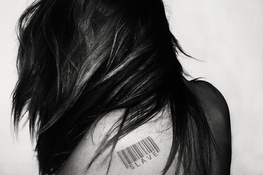"We must protect all children from being subjected to the worst forms of labor, from becoming victims of human trafficking and from being forced into armed conflicts around the world. At the same time, we must help them to pursue an education and obtain proper healthcare, and we must address the poverty and economic inequality that too often drives children to work."
-- Dr. Lorretta Johnson, Secretary-Treasurer, American Federation of Teachers
Kids Are Not for Sale: The Price of Human Trafficking
One of the most disturbing problems of our globalized society is the continued presence of human trafficking. It is a human rights crime that traps millions in cycles of exploitation for prostitution, forced labor, or child soldiering, and it is often called our own modern-day slavery. This lesson focuses on the problem of child trafficking in the United States and how your students can become part of the solution.
Step 1: Hook (5 minutes)
|
|
Many Americans believe that human trafficking is largely an overseas issue that does not affect our own communities. Here are two short videos that will introduce the topic and show the direct impact of trafficking on our home communities: Modern Day Slavery and Sex Trafficking, by the Women’s Leadership School of Brooklyn (winner of the Speak Truth To Power national video contest); and Human Trafficking: Modern-day Slavery in America, a CNN story that follows two young women from West Africa who were promised an American education, but were instead trapped in the U.S. for forced labor. Follow-up with this short True/False Quiz, along with short classroom activities, created by the New York Times as part of their Investigating Human Trafficking lesson plan.
|
Step 2: Videos and Other Teacher Resources

Journalist and activist Noy Thrupkaew has created a video, "Human Trafficking Is All Around You -- This Is How It Works" (18:51). Ms. Thrupkaew captures the story of victims of international trafficking--both male and female--and describes how the consumer goods that we rely on everyday are sometimes produced as part of a supply chain corrupted by human trafficking and forced labor. See also "Look Beneath the Surface" (13:19), produced by the U.S. Department of Health and Human Services, for stories from survivors.
For basic information about different forms of human trafficking, use this three-page summary from the U.S. Department of State's annual report on human trafficking. Also from the U.S. Department of State: "Myths and Facts" about human trafficking. For a more in-depth exploration, go to UNICEF's "Toolkit to Combat Trafficking in Persons." The introductory chapter provides definitions, opens case studies, discusses root causes, and outlines challenges for civil society.
Your students can discover their individual "Slavery Footprints" by completing this online interactive activity which tallies a hypothetical number of forced laborers trapped in the supply chain that produces consumer goods. Also, explore the interactive "Products of Slavery" website that shows the variety of goods highly likely to be produced by child or forced labor. The U.S. Department of State has also created a two-page sheet, "Slavery in Your Daily Life, demonstrating for students how their lives are connected to modern slavery. Use this PowerPoint presentation that provides basic comparative information about human trafficking globally, nationally, and at the state level. Find more information about your own state at the National Human Trafficking Resource Center, and compare state ratings with information from Polaris.
For basic information about different forms of human trafficking, use this three-page summary from the U.S. Department of State's annual report on human trafficking. Also from the U.S. Department of State: "Myths and Facts" about human trafficking. For a more in-depth exploration, go to UNICEF's "Toolkit to Combat Trafficking in Persons." The introductory chapter provides definitions, opens case studies, discusses root causes, and outlines challenges for civil society.
Your students can discover their individual "Slavery Footprints" by completing this online interactive activity which tallies a hypothetical number of forced laborers trapped in the supply chain that produces consumer goods. Also, explore the interactive "Products of Slavery" website that shows the variety of goods highly likely to be produced by child or forced labor. The U.S. Department of State has also created a two-page sheet, "Slavery in Your Daily Life, demonstrating for students how their lives are connected to modern slavery. Use this PowerPoint presentation that provides basic comparative information about human trafficking globally, nationally, and at the state level. Find more information about your own state at the National Human Trafficking Resource Center, and compare state ratings with information from Polaris.
Step 3: Common Core Exercises

We cannot begin to develop solutions to the problem of human trafficking, if we do not fully understand the root causes. As an exercise, have your students write a short essay to identify the important factors underlying human trafficking and possible solutions. Use this worksheet to guide your students.
The Fredrick Douglass Family Initiative has authored several lessons that connect historical U.S. slavery to modern-day slavery. The lessons include "Human Trafficking: Modern-Day Slavery in the United States," "Youth for Sale," "Demand and Supply," and "Domestic Sex Trafficking." Each lesson is accompanied by complete explanations for aligning Common Core standards.
The Fredrick Douglass Family Initiative has authored several lessons that connect historical U.S. slavery to modern-day slavery. The lessons include "Human Trafficking: Modern-Day Slavery in the United States," "Youth for Sale," "Demand and Supply," and "Domestic Sex Trafficking." Each lesson is accompanied by complete explanations for aligning Common Core standards.
Step 4: What Can Students Do?

Issues such as modern-day human trafficking can overwhelm students, but having them involved in projects to address the issue teaches that they need not be powerless. Your class can take action by demanding Congress to reauthorize the "Trafficking Victims Protection Act" through an online petition hosted by the anti-trafficking group, Polaris. Students can also get involved with other campaigns, like the student movement to abolish modern day slavery, "Not on Our Turf," created by Project Stay Gold. Encourage your students to research local organizations accepting volunteers. Start with this listing here.
Additional Resources

- Listen to UNICEF’s podcast, "Ending Human Trafficking Locally and Globally"
- Access texts to federal human trafficking legislation in the United States
- "Children for Sale: The Fight to End Human Trafficking" (41:17) -- a CNN Special Report narrated by actress Jada Pinkett Smith
- "21st Century Sex Slaves" (45:03) -- National Geographic Documentary
- Videos from the "Ted Talks" and "TedX Events" series, including
- Vednita Carter: "Sex Trafficking in Your Backyard" (19:39)
- Barbara Amaya: "I Was Human Trafficked for 10 Years. We Can Do More to Stop It" (7:43)
- Jessica Minhas: "Enslaved: From Victim to Victor" (16:51)
- Rachel Lloyd: "Human Trafficking" (19:23)
- Lisa Kristine: "Photos That Bear Witness to Modern Slavery" (19:21)
- Teachers, paraprofessionals, healthcare professionals, or members of the community who suspect that a student is being trafficked can contact the National Center for Missing & Exploited Children at 1-800-THE-LOST or at www.cybertipline.com
AFT Resources

- AFT Resolution "Against Human Trafficking and Sex Trafficking of Children"
- AFT Secretary-Treasurer Dr. Lorretta Johnson on World Day Against Child Labor
- AFT supports Filipino teachers who have been exploited as workers in the U.S.
- Toledo teacher builds awareness of human sex trafficking
- AFT and Jamaica Teachers’ Association
- Anti-Human Trafficking resources on Share My Lesson
